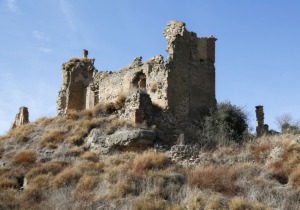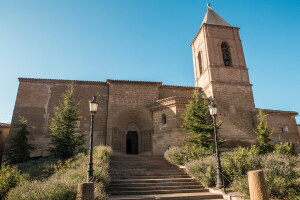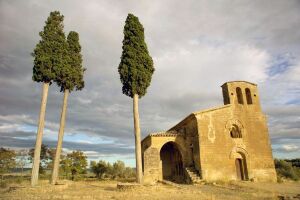Somontano produces wines of excellent quality due to an ideal combination of sunshine and rain; a plentiful land with centuries of tradition and the use of the latest technologies. The cultivation of vines originates in the Roman age and was of great importance to the monasteries throughout the medieval era. The region later became specialized to such an extent that wine production even determined the structure and distribution of the typical Somontano house. In the present day, it has become firmly established as an industry of importance.
Follow this route and imagine ancient landscapes; gaze at the mosaics of colour that change with the seasons and see how the natural environment has been tamed by the experienced hands of the local people.
It is not possible to define one single wine route in the Somontano region. The places worth visiting are numerous and are spread throughout the region, prime examples being the many excellent wineries and their vineyards. However, this simple itinerary can be followed easily by car and highlights the beauty of the Somontano landscape, where the vine is the main attraction.
The starting point is in Barbastro, the capital of Somontano, where visits to the Wine Zone and the Somontano Visitor Centre are both highly recommended. They are located side by side in the striking Complex of St. Julian, which is also the headquarters of the Regulatory Board of the Somontano Denomination of Origin (known as the D.O.) There is also a shop selling many excellent wines from the local wineries and a variety of handmade gourmet products.
Upon leaving Barbastro in the direction of Huesca, take the A-1232 road towards Alquézar and Salas Altas. As the road climbs slowly up the deep valley of the River Vero, the first vineyards appear, although vegetables and crops still dominate the landscape. Arriving at a crossroads, take the road towards Salas Bajas. This is the heart of the wine-growing area of Somontano as it was in this area that the first commercial production of Somontano wine took place. Some of the local wineries offerguided visits to their cellars and production areas.
The town of Salas Bajas will be your next destination. Here, the facades of the local houses display a number of architectural features, which highlight the age-old links with wine. The stone skirting on the facade of many houses for example, would have originally been designed to insulate the interior from any abrupt changes in temperature. This feature ensured an ideal place for the fermentation, storage and ageing of wines.
Next to the town centre of Salas Bajas, Enate winery can be found where guided visits can be made upon request.
The nearby town of Salas Altas also offers a number of points of interest, many of which are again associated with wine culture. As is typical of the region, a number of houses in the town were originally built with an opening in the stone skirting of the main facade. The recently harvested grapes were ‘posted’ through this small window and would hurtle down to the wine press in the basement of the house, in order to extract the grape juices. Once fermented, the wine was stored in the cool cellars.
Near here, two simple itineraries of around 12km each can be followed either on foot or on bicycle. They are called the Route of Candelera and the Route of the Vineyards, and are part of the GR45 network of paths within the Somontano area of Barbastro.Leaving Salas Altas behind, the route continues towards the settlement of Hoz de Barbastro, which promises an excellent panoramic view of the whole of the Somontano. The modern vineyards are undoubtedly the main feature of this extensive plain, and in addition, are the most important source of income for many families living in the surrounding villages.
Returning towards Barbastro vines continue to dominate the landscape, although oaks, almond trees and old olive groves also feature in this typically Mediterranean setting. In this area the towns ofMontesa, Cregenzán and Burceat can be found.
Of course the wine route does not end once back in Barbastro, as there are a number of wineries and vineyards to be visited throughout the region. The villages of Ponzano, Lascellas, Radiquero, Costean, Enate, Castejon del Puente, Monesma de San Juan and Estadilla, also have wineries of importance within the D.O. of Somontano. It is from places such as these that a variety of excellent wines are lovingly produced, which will be enjoyed by those with even the most demanding palate.









